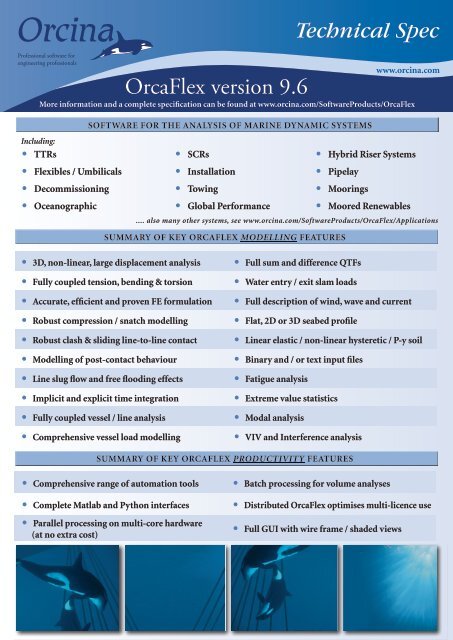

- ORCAFLEX PYTHON DYNAMICSPROGRESS INSTALL
- ORCAFLEX PYTHON DYNAMICSPROGRESS FULL
- ORCAFLEX PYTHON DYNAMICSPROGRESS FREE
ORCAFLEX PYTHON DYNAMICSPROGRESS FULL
If this happens, follow the instructions in the error message and specify the full path to you orca executable using the plotly.io. configuration property.
ORCAFLEX PYTHON DYNAMICSPROGRESS FREE
If you're still having trouble, feel free to ask for help on the forums at Will be applied automatically in future sessions. If it is successful then you may want to save this configuration so that it > plotly.io. = '/path/to/orca'Īfter updating this executable property, try the export operation again. Property to the full path to your orca executable. If you have installed orca, then for some reason plotly.py was unable to

ORCAFLEX PYTHON DYNAMICSPROGRESS INSTALL
$ conda install -c plotly plotly-orca=1.2.1Īlternatively, see other installation methods in the orca project README atĪfter installation is complete, no further configuration should be needed. If you haven't installed orca yet, you can do so using conda as follows: Searched for executable 'orca' on the following path: The orca executable is required in order to export figures as static images,īut it could not be found on the system path. If plotly.py is unable to find the executable, you'll get an error message that looks something like this:. Using the conda package manager, you can install these dependencies in a single command:$ conda install -c plotly plotly-orca=1.2.1 psutil requestsīy default, plotly.py searches the PATH for an executable named orca and checks that it is a valid plotly orca executable. There are 3 general approaches to installing orca and its Python dependencies. Because of this, the first image export operation in an interactive session will typically take a couple of seconds, but then all subsequent export operations will be significantly faster, since the server is already running. See for more information.īy default, plotly.py launches the orca server process the first time an image export operation is performed, and then leaves it running until the main Python process exits. In order to provide the fastest possible image export experience, plotly.py launches orca in server mode, and communicates with it over a local port. Orca can run as a command-line utility or as a long-running server process. Orca is an Electron application that inputs plotly figure specifications and converts them into static images. Please refer to the Static Image Export section for general information on creating static images from plotly.py figures. We now recommend Kaleido, as described in the Static Image Export section. This model is used to examine the relative contributions of aerodynamic and wave loads imparted to the floating system and the benefits of a three-bladed VAWT over a two-bladed VAWT through dynamic and fatigue analysis.This section covers the lower-level details of how plotly.py can use orca to perform static image generation.Īs of plotly version 4.9, Orca is no longer the recommended way to do static image export. Being a reduced complexity model, the 7-DOF model can be efficiently applied to assess performance of the newly designed floating VAWT. This model can predict performance of floating VAWTs with reasonable fidelity according to validation with OrcaFlex through static and dynamic responses of a floating VAWT with Darrieus rotor operating on a new tension-leg platform (TLP). Aerodynamic, hydrodynamic, and mooring loads and control of the rotor speed are fully considered. A new semi-coupled aero-servo-hydro method is developed to assess dynamic responses of a floating VAWT by modeling the system as a 7-degree-of-freedom (7-DOF) model: the supporting platform is considered as a 6-DOF rigid body the rotation of the rotor is considered as the 7th DOF.

One of the challenges is accurate prediction of the dynamic motion and loads performance of a floating VAWT. Floating vertical axis wind turbines (VAWTs) have many advantages over floating horizontal axis wind turbines (HAWTs) at large scales in deep water however, there are several key challenges to overcome as well.


 0 kommentar(er)
0 kommentar(er)
